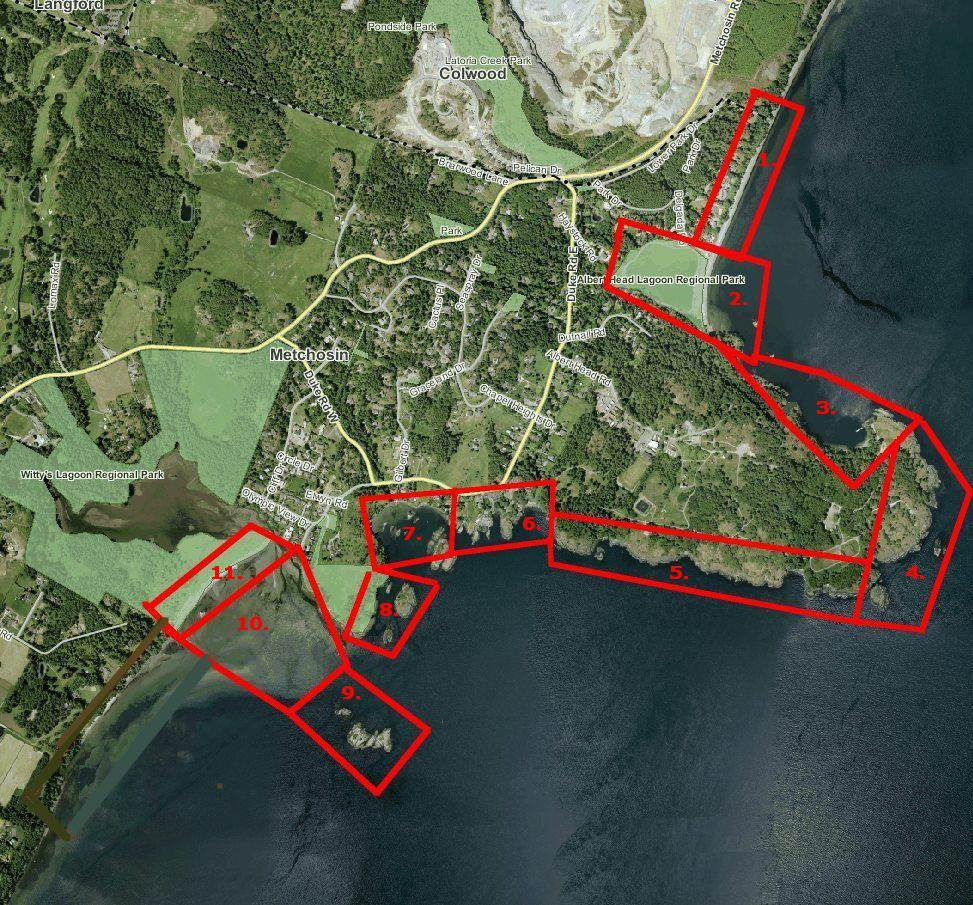
Aerial views courtesy of the CRD NATURAL AREAS ATLAS
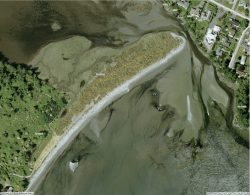 11..Witty’s lagoon/estuary and 10. Beach spit
11..Witty’s lagoon/estuary and 10. Beach spit
Witty’s beach is an accretional beach with materials supplied from long shore drift from the cliffs to the south. Behind the beach is a large tidal lagoon, and estuary fed by Bilston Creek.
-

-
Salt pans form in the upper reaches of the lagoon where only the highest tides reach. In the fall, concentric layers of salt tolerant species form intriguing patterns in these pans.
-
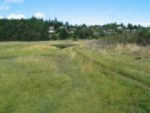
-
The edge of the lagoon. This area gets flooded at high tide. The nutrients accumulated in the marsh are important to nourish the marine ecosystem around.
-
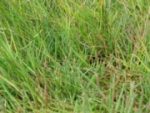
-
The predominant vegetation of the estuary is Salicornia sp.and Distichlis spicata
-
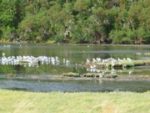
-
Seabirds frequent the lagoon throughout the year but are abundant in migration periods
-
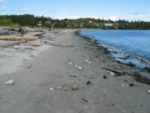
-
The view looking north on Witty’s beach
-
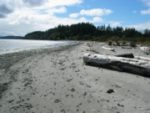
-
The view looking south on Witty’s beach
-
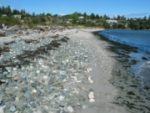
-
Cobble beach forms part of the spit. Unconsolidated beach materials are essential to absorb the impact of winter storms.
-
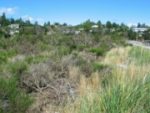
-
Behind the shore lie many layers of old shorelines, in photos taken 20 years ago this spit appears as a succession of berms. The introduced species scotch broom, Cytisus scoparius has colonized the area, suppressing the natural beach vegetation, possibly leading to instability in high storm surges.
-
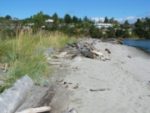
-
photos taken 20 years ago this spit appears as a succession of berms. The introduced species scotch broom, Cytisus scoparius has colonized the area, suppressing the natural beach vegetation, possibly leading to instability in high storm surges. In healthy sections of the beach which have not been heavily impacted by people lives the dune grass Leymus mollis. The underground creeping rootstocks bind the sand together and can absorb heavy wave impact
-
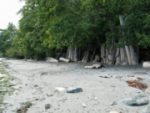
-
Link to File of Anthropogenic Impacts on Habitat

Report on Witty’s lagoon (includes Ecology, geology etc. Waterose et al.
Link to the Witty’s lagoon Waterose et.al report
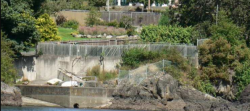 Link to the Anthropogenic Effects on this area
Link to the Anthropogenic Effects on this area
Link to The Wittys Lagoon Estuary and Beach Lab
The following booklet was written in the 1970’s based on the report done by Dr. Wolf Bauer.
-
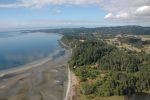
-
Looking straight south along Taylor Beach. The sea cliffs to the south consist of glacial gravels and sands that are slowly eroding landwards.
-

-
Longshore drift provides the materials for the spit and beach, cutting off the lagoon behind.
-
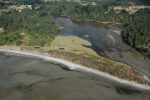
-
Witty’s spit and lagoon viewed from the east.
-

-
At low tide a large sandbar appears off the shore.
-
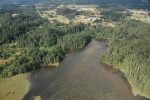
-
Inside the lagoon, at the far end, The Sitting Lady waterfalls sends the water of Bilston Creek into the estuary
-
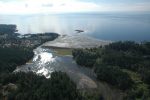
-
Looking east over Witty’s lagoon
-

-
Looking north over Witty’s lagoon
-
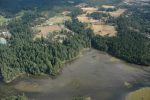
-
The end of the lagoon with the Sitting Lady Falls. Dividing the Metchosin Creek from the ocean
-
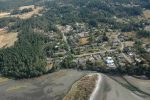
-
Runoff from golf courses such as the one in the upper central portion may carry nutrients which cause algal growth and eutrophication when the lagoon is poorly flushed.
-
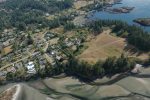
-
The sand bar stretches out past Tower Point which is a CRD Regional Park
-
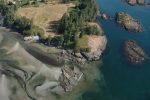
-
The end of Tower Point

A panorama view from the inside of the spit on Witty’s lagoon

A panorama view of the narrow channel for tidal exchange at the end of Witty’s Spit.
4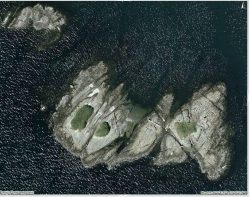 .. Haystock Islands
.. Haystock Islands
Haystock Islands show some evidence of human occupation by First Nations in the past.
-
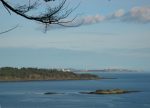
-
Haystock Islands with Albert Head and Victoria beyond. Taken from Sea-Bluff Trail
-

-
Hay stock Islands from Witty’s beach.
-
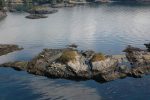
-

-
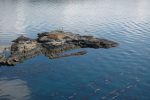
-
Haystock Islands
-
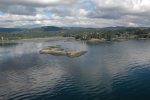
-
Haystock Islands with Tower Point and Witty’s Beach in the background
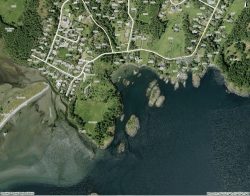 4.5,6,7.. Tower Point and Duke Road Waterfront
4.5,6,7.. Tower Point and Duke Road Waterfront
South of Albert Head
-
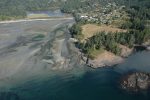
-
A view looking West in front of Tower Point. Sandbar at low tide from Tower Point to Witty’s spit.
-
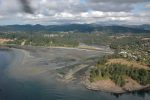
-
Tower Point and south to Taylor Beach Cliffs
-
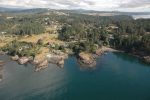
-
Beach Cliffs Duke Road residences fronting on the ocean.
-
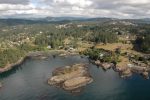
-
Bays in behind Tower Point
-
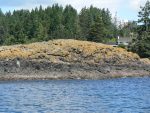
-
This Island in the foreground of the picture to the left, is made entirely of pillow basalt. Chris Yorath discusses the origin of these landforms in the paragraphs below.**
-

-
Link to File of Anthropogenic Impacts on Habitat of Albert Head South
- ** “You can also see excellent exposures of pillow lavas at Tower Point. On the Point and in the sea cliffs of nearby islands, the characteristic feature of the pillow basalts are well displayed in clean outcrops above the high tide line. These dark green, fine-grained rocks commonly contain amygdules filled with quartz and calcite, which appear as white spots up to 1cm in diameter. Several vertical, green vesicular dykes, up to 1 m. wide, trend across the point, and a minor east dipping fault is exposed on the western side of the point. Several outcrops display piles of basalt pillows with flattened bases and shapes that indicate they were squeezed together while the lava was still hot and plastic. You cans see conspicuous light grey to almost white boulders of granodorite, obviously (glacial) erratics, lying on the surface of the pillow basalts.”…..
- “According to Nick Massey of the BC Geological Survey, the Metchosin Igneous Complex developed as an oceanic island, not unlike Iceland, about 54 million years ago. The pillow basalts exposed here as well as those at the Sooke Potholes… are only part of the complex….Many of the pillows seen in this area contain abundant, round white amygdules, which are commonly arranged in layers close to the margins of the pillows. These amygdules were originally vesicles that have been filled by crystals of calcite and other minerals. Vesicles form when gas, dissolved in molten lava separates from the liquid, causing it to froth. If the pressure of the weight of the overlying water is sufficiently great, the gas does not separate and no vesicles form. Thus there is a rough correlation between the depth below sea level at which the lava erupted and the vesicularity of the lava; with increasing depth, the degree of vesicularity decreases. From this relationship, we can conclude that the pillow basalts of the Metchosin Igneous Complex erupted in moderately deep to shallow water, but not as deep as the present Pacific Ocean Spreading Ridges.”
2005, Yorath, Chris, The Geology of Southern Vancouver Island, page 114, Harbour Publishing.
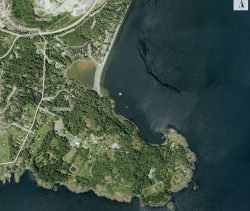 5.South Side of Albert Head
5.South Side of Albert Head
-
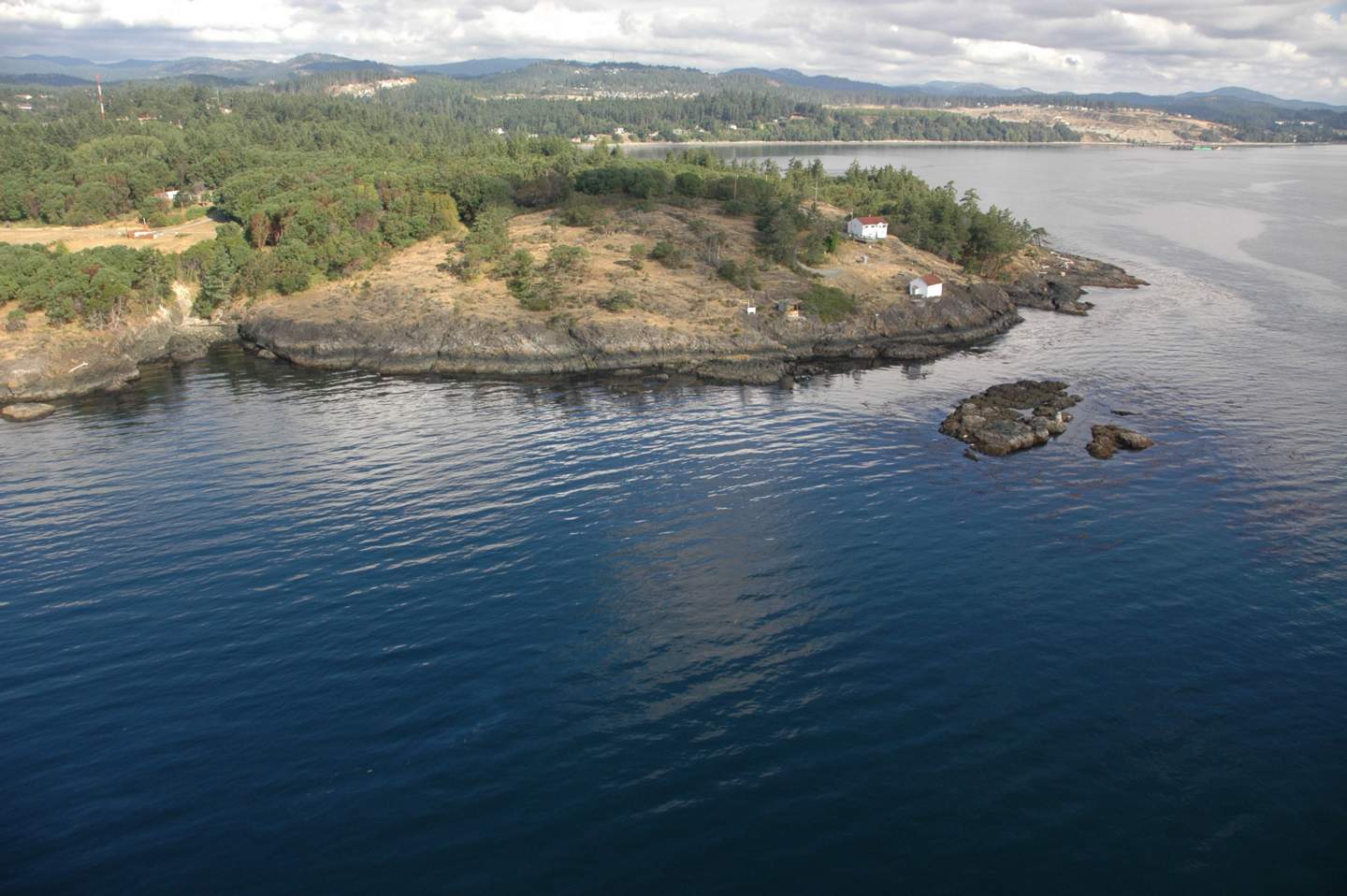
-
The East side of Albert Head. Several small islands rise up from the deeper water offshore.
-

-
from the deeper water offshore. The south side of Albert Head. Several clicks on the image will enlarge it further
 4,. Albert Head and 2 and 3 North Lagoon and 1.Beach
4,. Albert Head and 2 and 3 North Lagoon and 1.Beach
-
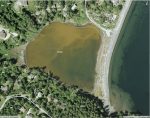
-
Albert Head Lagoon at the south end
-
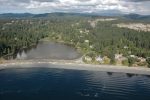
-
Lagoon and Beach
-
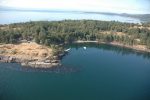
-
Dock behind Albert Head.
-
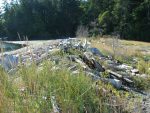
-
The South end of the lagoon on the seaward side
-

-
The South end of the lagoon on the seaward side
-

-
Native vegetation struggles hard with the human traffic. Here Gumweed lives on the upper part of the berm
-
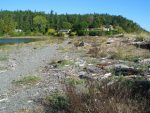
-
View North on the inside of berm
-

-
Sand Burr is a native vegetation which has a woody root, deeply anchored in the sand
-
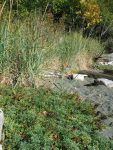
-
An ideal portion of natural beach which is resistant to erosion if left undisturbed
-
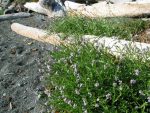
-
The American Sea Rocket grows closest to the ocean. It also helps to stabilize the beach.
-
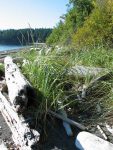
-
Beach Grass, has long underground root stems enabling some part of it to survive when part gets eroded by storms.
-
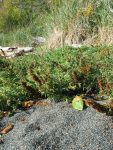
-
A natural portion of the beach. Compare this with the images of the lack of this vegetation where humans have decimated the natural structure in the file below
-
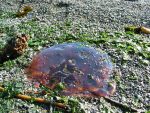
-
The sea Jelly Cyanea often ends up on the beach after deteriorating at sea.
-
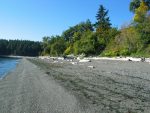
-
A nice stretch of a naturally vegetated berm at the north boundary of Metchosin. The impacted area is to the south.. See Anthropogenic Impacts—–>

To the north of Albert Head Beach and outside of the boundaries of Metchosin District lies the gravel pit which is now in the stages of being close down, to be replaced by a large development .
Anthropogenic habitat modification from Witty’s lagoon to the south side of Albert Head.
Acknowledgements:
Anthropogenic Impacts Albert head lagoon and shoreline
The CoastaMetchosin website has been created to represent the contiguous ecosystems of the Race Rocks Ecological Reserve/Marine Protected Area and for the use of the Green Blue Spaces sub committee of the Metchosin Environmental Advisory Select Committee (MEASC). Copyright: G.Fletcher 2013 (garryf ( use at) gmail.com)

 11..Witty’s lagoon/estuary and 10. Beach spit
11..Witty’s lagoon/estuary and 10. Beach spit
 Link to the Anthropogenic Effects on this area
Link to the Anthropogenic Effects on this area 4.5,6,7.. Tower Point and Duke Road Waterfront
4.5,6,7.. Tower Point and Duke Road Waterfront 4,. Albert Head and 2 and 3 North Lagoon and 1.Beach
4,. Albert Head and 2 and 3 North Lagoon and 1.Beach